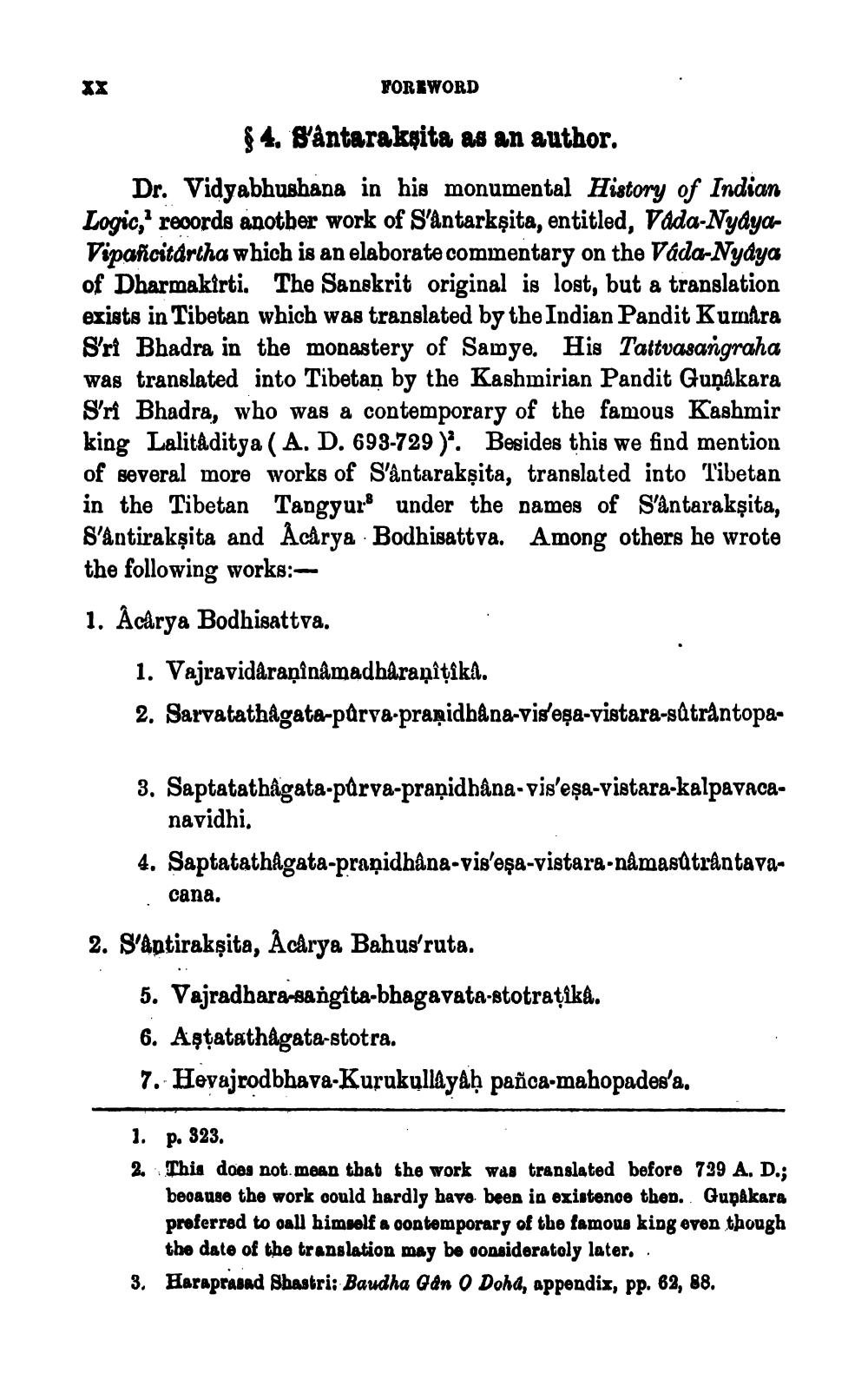________________
FOREWORD
$ 4. Såntarakṣita as an author. Dr. Vidyabhushana in his monumental History of Indian Logic, records another work of S'antarkşita, entitled, Vada-NydyaVipancitártha which is an elaborate commentary on the Vada-Nyaya of Dharmakirti. The Sanskrit original is lost, but a translation exists in Tibetan which was translated by the Indian Pandit Kumara Sri Bhadra in the monastery of Samye. His Tattvasangraha was translated into Tibetan by the Kashmirian Pandit Guņåkara S'ri Bhadra, who was a contemporary of the famous Kashmir king Lalitâditya ( A. D. 693-729). Besides this we find mention of several more works of S'ântarakṣita, translated into Tibetan in the Tibetan Tanggur under the names of S'antarakṣita, S'antirakşita and Acarya Bodhisattva. Among others he wrote the following works:1. Acarya Bodhisattva.
1. Vajravidáraņinâmadharanitika. 2. Sarvatathagata-pärva-praạidhana-vis'eşa-vistara-sdträntopa
3. Saptatathāgata-parva-praņidhana-vis'eșa-vistara-kalpavaca
navidhi. 4. Saptatathagata-pranidhana-vis'eşa-vistara-námasútrantava
cana.
2. S'aptirakşita, Acarya Bahus ruta.
5. Vajradhara-sangita-bhagavata-stotraţika. 6. Aştatathagata-stotra. 7. Hevajrodbhava-Kurukullayaḥ pañca-mahopades'a.
1. p. 323. 2. This does not mean that the work was translated before 739 A. D.;
because the work could hardly have been in existence then. Gupåkara preferred to oall himself a contemporary of the famous king even though
the date of the translation may be consideratoly later.. 3. Haraprasad Shastri: Baudha Gan 0 Doha, appendix, pp. 62, 88.




